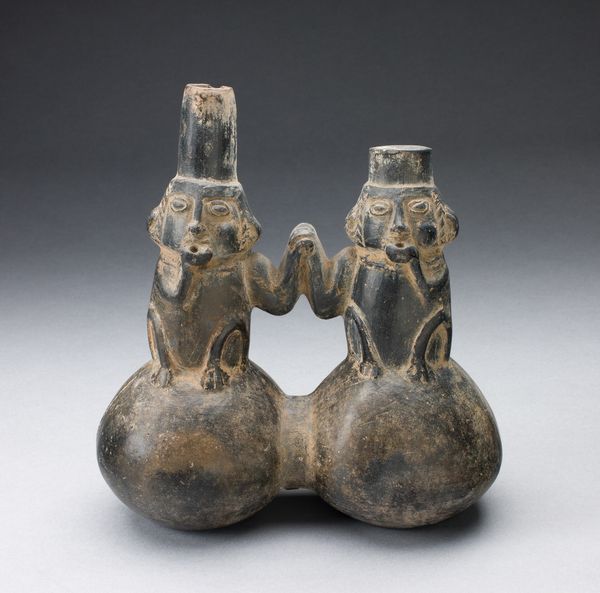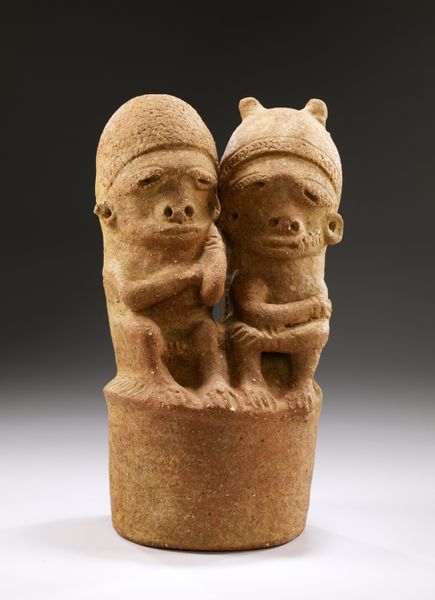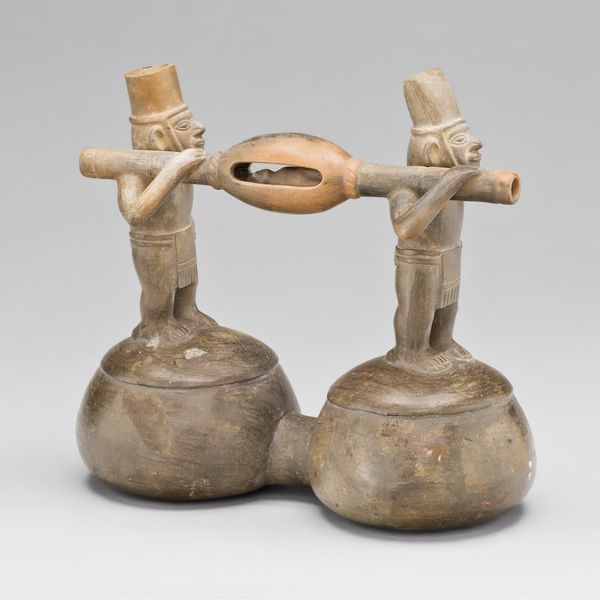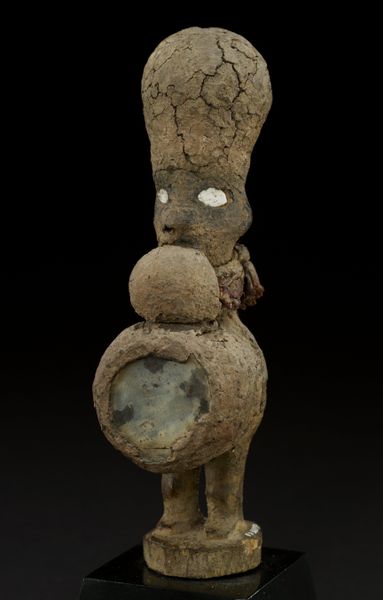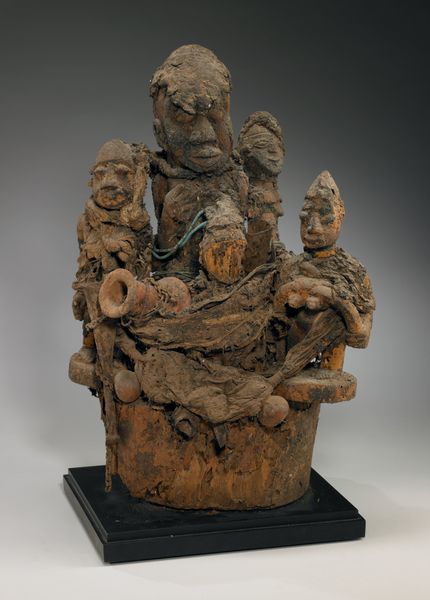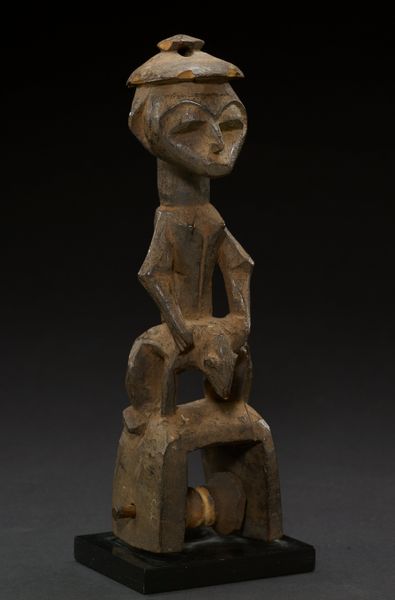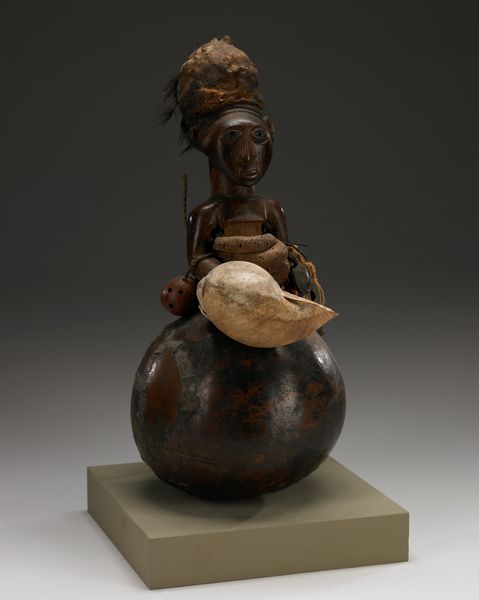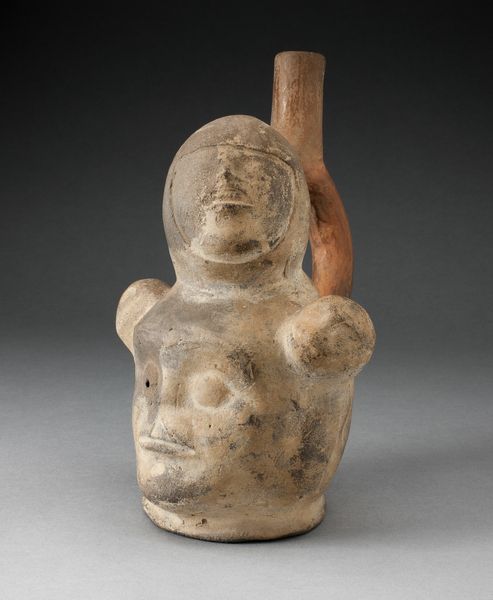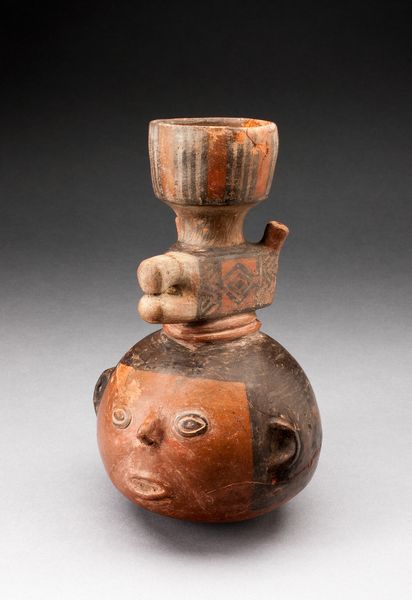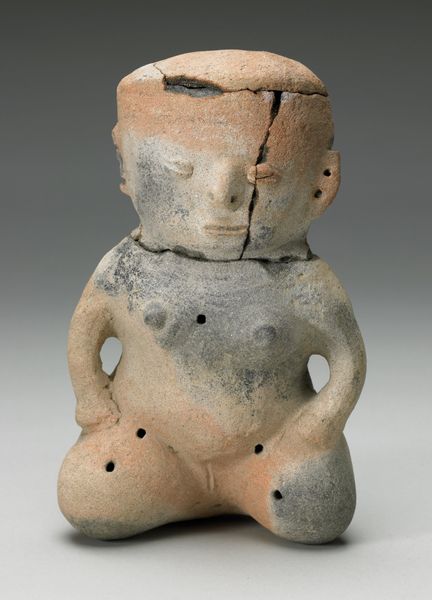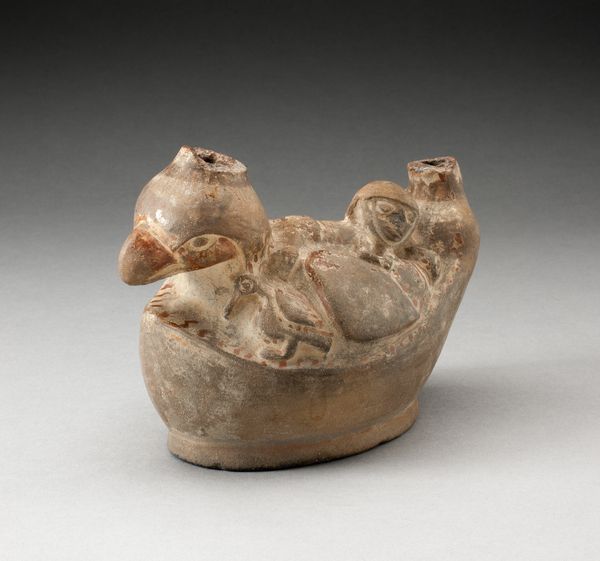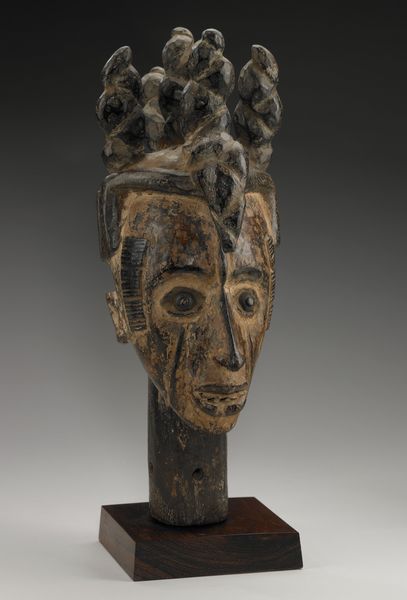
sculpture, wood
#
african-art
#
stone
#
sculpture
#
figuration
#
sculpture
#
wood
#
yoruba-art
Dimensions: 9 × 6 1/2 × 6 1/16 in. (22.86 × 16.51 × 15.4 cm)
Copyright: Public Domain
This Twin Shrine was made by the Dogon people; we don’t know exactly when, or how. You can see it at the Minneapolis Institute of Art. I’m struck by its strange duality. These figures seem to rise out of the same base, like twins sharing a body. There’s a stillness to it, an earthy gravity that pulls your eye down. It's rough hewn, as if shaped by hand from the earth itself. Look closely, and you can almost feel the grit of the material, perhaps clay or a similar substance. There's an ambiguity in the details, like the worn features of the figures, or the rusty metal additions, offering only glimpses of their story. The overall effect is one of quiet contemplation. In some ways this reminds me of Arp, whose sculptures also invite a kind of tactile seeing. But unlike Arp’s bronzes, this piece feels less refined, more raw. The Dogon artists embraced imperfection, reminding us that art isn't about perfection, but about connection, storytelling, and the enduring power of the human spirit.
Comments
minneapolisinstituteofart almost 2 years ago
⋮
Among the Dogon peoples of Mali, the birth of twins is a special event. Twins receive specific names, they are completely shaved when presented for the first time to relatives and neighbors, and a small house shrine is made for the father to perform rituals. This twin shrine consists of a clay basis with two small depressions for the offerings. The male and female wooden sculptures represent the twins and are empowered by pieces of bent iron in the shape of the handle of a hoe. Once a year, during communal ceremonies, the twin shrine is brought out of the house for offerings of millet paste and chicken blood.
Join the conversation
Join millions of artists and users on Artera today and experience the ultimate creative platform.
